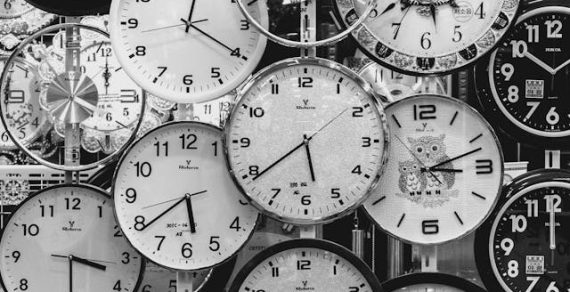Has it ever happened to you that you are browsing your social networks, you find a post that attacks your religious, political or moral beliefs, you become indignant and, with a furious movement of the thumb, you pass by without reading it? Well, your action may have been caused by confirmation bias in psychology.
Today we are surrounded by lots and lots of information, and we spend our lives consuming it. But have you ever thought about why you only consume certain information and no other?
Join us to discover confirmation bias, other types of preferences, and ways to protect you against its effects.
Ready? Let us begin!
Table of Contents
What is confirmation bias?
The confirmation bias, also called confirmation bias or selective collection of evidence, is our tendency to seek, consider consuming and remember only the information consistent with what we received earlier.
At the same time, in the confirmation bias, we ignore, discard or forget the information that contradicts that previous information.
As human beings, we express the information we have received throughout life as beliefs or hypotheses.
When confirmation bias is at work, we look for information that confirms the beliefs or hypotheses that are a safe part of our system of ideas. At the same time, we discard and consider false information that contradicts our beliefs.
Confirmation bias study
Although its effects are noted throughout history, the psychologist was the first person to identify confirmation bias.
In a series of studies, the psychologist asked subjects to identify the rule that ordered a group of numbers, giving them an only clue that the group “2-4-6” met that rule. To recall, subjects had to create their series of three numbers.
As a result, the subjects began to create groups of numbers according to the rules they already knew or tried to test more complex rules, such as “sequence of numbers separated by 2” or “the number in the center is the middle of the two sides.”
In the end, the rule was straightforward, “numbers in an increasing sequence.” A sequence like “4-9-287” would have satisfied the condition without problems.
The psychologist highlighted is that no subject did anything to find a rule other than what he already thought or “think outside the box”, as we would say now.
The psychologist tests initiated the investigation of confirmation bias.
Examples of confirmation bias in everyday life
Confirmation bias can help reinforce our performance in many areas of our lives. Here are a few examples:
. In advertising: The psychology of confirmation bias is often used to favour the consumption of a particular product or service. A commercial can use stereotypes or clichés already internalized by potential clients to facilitate the reception of his message, transmitting them while reinforcing them.
. A researcher may expect to find certain conclusions based on the previous study at the end of his work in scientific research. It could affect how you process the information and inadvertently lead you to favour only what is consistent with your previous findings.
. In the justice system: A judge or jury can pass sentences based on unjustified prejudice against a defendant. It is even known that jurors have often decided their verdict in the early stages of the trial (which usually last for months). It is a blatant case of confirmation bias.
. In politics: A candidate may include messages or symbols in his campaign that reinforce general ideas and beliefs among his potential voters. It has three effects: on the one hand, it strengthens the preconceptions of voters who already favoured him, increasing their intention to vote; on the other, it makes it more difficult for them to pay attention to other proposals; and finally, it attracts new voters reached by a message that confirms what they already believe (many times, regardless of whether that is correct, fair, or even close to the truth).

What is a cognitive bias?
Confirmation bias is part of a larger group of psychological effects: cognitive biases.
A cognitive bias, by definition, is a psychological effect that causes your brain to misinterpret the information it receives. A cognitive bias is said to have to do with the shortcuts our brain uses to process data (heuristics), the influence of society, and our emotionality.
Cognitive biases are the cause that, many times, we think and act irrationally.
In addition to the confirmation bias we are talking about, we will note other types of cognitive biases:
Anchor bias
The first information we receive about something determines our final opinion, disregarding the rest of the evidence.
Correspondence bias
We tend to attach great importance to personality and “way of being “to explain people’s actions, although these can also be influenced by context and environment.
False consensus bias
It is one of the most widespread examples of cognitive biases. We believe that what we think and do is correct “because everyone does it “, although there is no direct evidence about it or the level of acceptance of something does not determine its validity.
Status quo bias
We believe that the current situation in which we find ourselves is the best possible, and we perceive any change in that situation as a loss.
Hindsight bias
It is one of the most elaborate types of cognitive biases. The past events appear in our memory as logical and predictable because of the knowledge we acquire after they occur. As a result, our memory of them destroy.
Self-service bias
We claim greater control, and therefore greater responsibility, for our successes than for our failures. It is an excellent example of irrational cognitive bias.
In a way, it’s entertaining to go over the types of bias that affect people until you realize that we’re all subject to them, including, of course, you.
What is cognitive dissonance?
Confirmation bias plays a vital role in cognitive dissonance in one of the most interesting psychological phenomena in humans.
This dissonance occurs when a person has ideas, principles, and values contradictory to each other, and to solve the conflict, they try to adjust them psychologically.
The first to identify cognitive dissonance was a professor in his book Theory of Cognitive Dissonance.
Experiments in cognitive dissonance
He conducted a series of experiments to test his theory of cognitive dissonance.
After assigning a student very dull tasks to complete for an hour, he asked him as a favour to tell the next participant that the task had been fun. He offered some a dollar for the turn and another twenty dollars. The next participant, a hidden helper, would listen and note the first’s efforts to describe the tedious task as fun.
He observed that participants with a dollar made the most effort to present the tedious task as fun. He understood that, by receiving less payment, their dissonance between tedious and fun tasks was much more significant, and therefore, they had to make more efforts to rationalize the situation. In contrast, those who received twenty dollars had a reward that somehow reduced their dissonance.
For cognitive dissonance to occur, two characteristics must be present:
. The contradiction between ideas and values must be psychologically uncomfortable; that is, it must motivate the individual to seek a way to reduce it to regain balance actively.
. In addition to adjusting his new way of thinking, the individual avoids the information that reinforces the previous contradiction and looks for the one that supports it. That is the role of the confirmation bias.
His cognitive dissonance would later lead to the identification of confirmation bias and would become one of the most significant findings in modern psychology.
Its effects in changing people’s perceptions of right and wrong have been repeatedly demonstrated, sometimes with tragic consequences.
Risks of confirmation bias
Being an erroneous way of processing information about our environment, the confirmation bias in psychology carries certain risks, some obvious and others not so much:
. Communication problems: If we cultivate the predisposition to keep in mind only what pleases us, others will have serious problems communicating. An excellent example of confirmation bias in everyday life is the work environment, where it could be exemplified by the attitude of a boss who is “only interested in hearing good news.” It ignores that negative feedback is a powerful improvement tool for the work team.
. Intellectual poverty: By receiving only information that confirms what we believe, we naturally remain in ignorance about the things that we do not think so (or more often that we do not want to consider). It is similar to eating the same recipe every day; our ability to appreciate new ideas and concepts gradually diminishes. It can be problematic in settings where training is ongoing, such as high-performance jobs or universities.
. Psychological manipulation: As we said in the policy example if someone wants something from us and our confirmation bias is large enough, they will only have to communicate their ideas to us by matching them with those we already believe. By confirming what we already believe, you will get what you ask for from us. It can range from buying your beer brand to voting for an extremist party.
What to do against confirmation bias?
So is it impossible to process the information correctly? Certainly not. Learning to interpret the information you receive will help you reduce your confirmation bias.
. Vary your sources of information: Eating just one recipe every day is dull. Always try to hear two or more different aspects of the same question by other means. With that, you will have more elements of judgment, and you will be able to form an informed opinion on any matter.
. Take distance from the information you consume: Make sure that your emotions are not the first thing you consider when processing the information you consume. Instead, examine that information: where it comes from, who is issuing it, whether it relies on reliable sources, and whether its goal is to clarify a truth or convince you. It will not only help you reduce your confirmation bias but other cognitive biases. And remember to control your emotions, not ignore them.
. Pay more attention to opinions different from yours: Enrich your human experience with points of view different from yours. Exchange ideas with those who think differently from you, asking for respect and being willing to grant it.
. Take your time to analyze the information: The current media tend to favour the rapid consumption of data, which generates a multitude of cognitive biases. Understand that reaching a correct conclusion often takes time and thought. The more critical the matter (religion, politics, relationships, family, society), the more influential the time.
. Don’t be afraid to express your opinion: if you do it the right way. If you learn to express your opinion in a civilized manner, you will know to expect the same from others, and you will be able to generate an exchange of ideas that will be beneficial to all parties.
There is no doubt that we live in times when information appears everywhere. Understanding confirmation bias will help you better understand all that wealth of knowledge and enrich your emotional and intellectual wealth. Your opinions will be more informed, and you will prepare yourself to act on them more positively.




